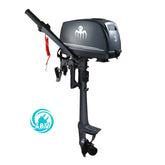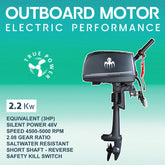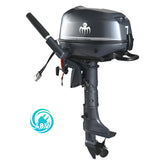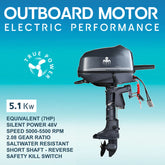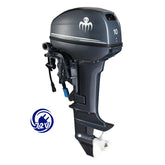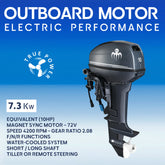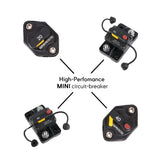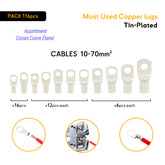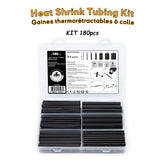- Thermal Breaker: This device protects your electrical equipment from damage caused by overloads and short circuits. It operates by sensing excessive heat generated by high current flow and automatically trips to open the circuit.
- Differential Breaker (RCD): An RCD is a critical safety device that protects people from electric shock and prevents fires caused by current leakage. It works by detecting an imbalance in current and is typically used in AC (alternating current) systems.






Thermal Circuit Breaker 60A-300A with LED | Panel Mount
SKU:
CBL60I
- 23.50€
- 23.50€
- Unit price
- per
Thermal Circuit Breaker with LED – 60A to 300A | Panel Mount
Dependable DC Protection in 12V / 24V / 48V systems
This flush-mount thermal breaker with a built-in LED signal ensures reliable protection of your DC power networks against short circuits and overload. Equipped with a manual reset and IP66 waterproofing, it is designed for integration directly into boat panels, offering safe and durable protection of your onboard equipment.
Operation and Key Features
Automatic Trip Mechanism
During an overload event, the breaker automatically interrupts the circuit. The integrated LED then switches on, clearly showing that protection has been triggered. Restoring power is achieved manually via the reset button on the breaker face.
LED Feedback System (ON/OFF)
- LED off: normal circuit activity
- LED on: breaker open, fault detected
- Manual Reset button: restores supply manually
Durable Construction for Harsh Environments
- M6 or M10 stainless studs depending on current rating
- IP66 panel sealing: resistant to spray and saltwater
- Temperature range: −32°C to +82°C
- Ignition Protected ISO 8846: suitable for fuel compartments
Application Examples by Amperage
| Amperage | Voltage | Main uses | Model |
|---|---|---|---|
| 60A | 12V/24V | 600W inverters, switchboard input protection, compact solar kits, 12V cooking devices, lighting banks | CBL60 |
| 120A | 12V/24V | Electric windlass on RIBs, bilge pumps, 1500W inverters, auxiliary RV systems | CBL120 |
| 200A | 12V/24V | 24V winches, heavy bilge pumps, solar arrays with inverter, professional boat equipment | CBL200 |
| 250A | 12V/24V | Hydraulic lifts, 24V bow thrusters, deck machinery | CBL250 |
| 300A | 12V/24V/48V | 48V bow thrusters, advanced inverter-battery banks, large vessel hydraulics | CBL300 |
Integration and Installation
Typical setups
- RIBs and cruisers: helm panels, bilge compartments
- Large vessels: machinery protection, bridge control panels
- RVs & 4x4s: auxiliary high-current modules
- Solar storage: between battery packs and inverters
- Industrial machinery: hydraulic or electric drive systems
Comparison with other devices
Breaker vs. battery isolator – The isolator needs user intervention, while the breaker trips automatically and provides instant LED status.
Breaker vs. differential switch – The differential protects people in 230V AC; this unit protects equipment in 12/24/48V DC.
Breaker vs. fuse – Unlike a disposable fuse, the breaker is resettable and avoids replacing components at sea.
Advantages of the panel-mount version
Compact integration
Flush fit into existing dashboards or electrical panels for a professional finish.
Safety with visibility
Automatic cut-off and LED alarm for quick fault detection even in low-light conditions.
Long-term reliability
IP66 sealing and stainless fittings for dependable service in marine and industrial environments.
Service economy
Resettable design eliminates fuse replacements and reduces downtime.
Complementary products
Surface-mount version available: For external mounting or bulkhead applications, see our LED thermal breaker 60A–300A (surface mount) with identical protection rating.
Compact breakers: For installations below 60A, check our mini series 30–60A breakers.
Flush-panel thermal breaker with LED feedback — Available from 60A to 300A
|
Ref. |
CBL60I |
CBL120I |
CBL200I |
CBL250I |
CBL300I |
|
Voltage |
12–48 VDC |
||||
|
Current rating |
60A |
120A |
200A |
250A |
300A |
|
Mounting |
Panel / flush mount |
||||
|
Stud size |
M6 |
M10 |
|||
|
Torque |
11.3 Nm |
17 Nm |
|||
|
Interrupt capacity |
3.5 kA @ 48V — 5 kA @ 18V |
||||
|
Operating temperature |
−32°C to 82°C |
||||
|
Class |
Manual reset T3 |
||||
|
Size |
74 × 48.4 × 46 mm |
||||
|
Center distance |
57 mm |
||||
|
Weight |
69 g |
69 g |
103 g |
103 g |
103 g |
|
Waterproof |
IP66 |
||||
|
Warranty |
1 year |
||||
How to use :
Link to the blog
Discover tips, tricks, and detailed instructions on using our product in our dedicated blog post. Learn about setup, operation, and optimization to get the most out of your purchase.
Link to the blog
Frequently Asked Question
Our Recommendations
Thermal Circuit Breaker 60A-300A with LED | Surface Mount
- From 26.80€
- From 26.80€
- Unit price
- per
Circuit Breaker & On/Off Switch (Manual Reset) - Panel Mount
- From 37.50€
- From 37.50€
- Unit price
- per
Mini circuit breaker 30A-60A
- From 19.00€
- From 19.00€
- Unit price
- per
Tin-Plated Terminal Kit (SC Rings 10-70mm²) - 116pcs
- 32.50€
- 32.50€
- Unit price
- per
Heat shrink sleeves with glue : KIT 180pcs / 12m
- 9.90€
- 9.90€
- Unit price
- per
- Choosing a selection results in a full page refresh.
